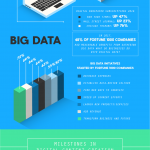Why Apple And Google Are Titans
This is the first essay in our series of 10 Lessons From 10 Years Of The World’s Most Innovative Companies.
There was a time when Google and Apple represented two very different, and opposed, models of technology. Googlers were the engineering brainiacs, adept with algorithms and champions of open-source, share-what-you-know code. Applers were design aesthetes, who kept their ideas behind guarded doors and only rolled out internally crafted, fully controlled end-to-end experiences. The Apple ecosystem was a precious and spare place; Google’s was all head, no heart. But a funny thing happened on the way to tech superstardom: These two meteors began to converge. While the cultures remain quite different, and their businesses have become broader (and richer), both companies have learned to embrace a more eclectic approach to problem solving. They defy easy categorization.
Apple and Google (or Alphabet, as the parent entity is now of course known) are the only two businesses that have been highlighted on each of Fast Company’s World’s 50 Most Innovative Companies lists over the past 10 years. That is because, over that time, they have continually and consistently remade themselves. The world is changing so fast no company can stay on top, unless it is changing just as fast. What Apple and Google both represent is how relentless, and essential, the need for speed has become.
Innovation is not a onetime activity. It is a philosophy and culture. The fruits of innovation do not unfold on schedule, in a single year, along a straight line. To stay up with—and ahead of—the changes in today’s world, you need to be always moving, trying new things, fueled by an internal restlessness. This is at the heart of both Apple and Google.
One last point, and it is not a trivial one: Given the pace and pressure of the changing business environment, how does an enterprise know which trends to react to, what adaptations to make? After all, we can’t do everything–we can’t wake every day and start from scratch (despite Jeff Bezos’s refrain that every day at Amazon is Day One). The critical corollary, then, to that need-for-speed: a need for purpose. Having a clearly understood mission behind an enterprise allows everyone to prioritize, in real time, to quickly assess which changes are worth responding to and what lens to use in addressing them. Apple and Google have always had this framework, from Steve Jobs’s mission of “making tools for the mind that advance humankind” to Google founders Larry Page and Sergey Brin’s pledge to “do no evil” while “organizing the world’s information.” Having a clear direction is an essential element for defining a distinctive culture of innovation.
(9)














